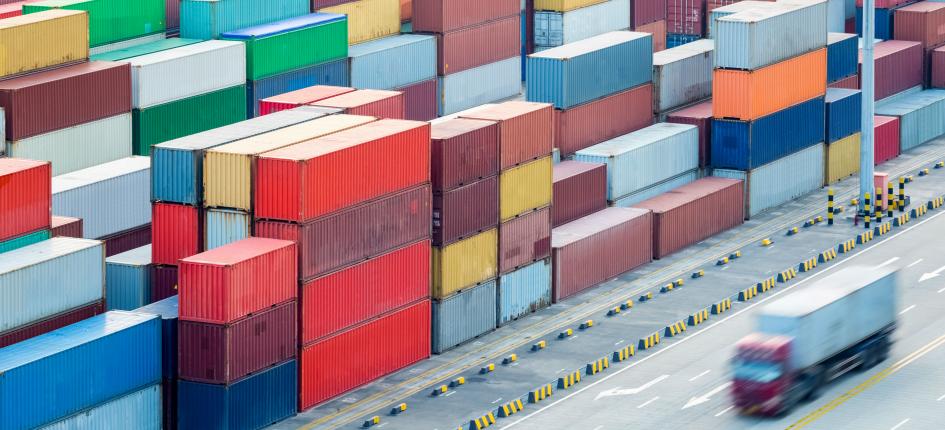Exporting Swiss SMEs are currently in a complicated situation: On the one hand, today's global economy and globalization offers them more growth opportunities than ever before; on the other, international free trade is currently being questioned across the world. The consequence of this is that new trade barriers are being created in many markets.
But when we speak of trade barriers, we don’t necessarily mean classic customs duties; with the establishment of the World Trade Organization (WTO) and its predecessor GATT, customs duties have been significantly reduced over the last few decades in most countries and are now at a low level. An example: According to data from the World Bank, the average applied customs duties for industrial goods in the European Union in 2012 was only around 1.8 percent, and in the US around 2.9 percent (using data available up to 2012).
The new trend: non-tariff trade barriers
“Indeed, it is very rare for SMEs to refrain from entering the market simply because of the tariff rates that apply in a given market,” confirms Alberto Silini, Head of Consultation at Switzerland Global Enterprise (S-GE). But he also notes the worldwide trend towards more trade barriers: “We have been observing for some years now that Swiss exporters are increasingly struggling with so-called non-tariff trade barriers.”
In a nutshell, non-tariff trade barriers are all measures that states use to restrict trade or specifically imports, but which are not traditional customs duties. Non-tariff trade barriers can be roughly distinguished into three categories:
Border trade restriction measures
A tool that states repeatedly use to restrict trade and protect native producers from import competition. The most drastic border trade restriction measures include import and export bans on certain goods and quotas. But attempts are also made to keep foreign competitors out of the domestic market using complex customs procedures, disproportionately high administrative fees or complicated formal requirements for accompanying documents.
Internal measures
Instead of “obvious” border measures, states also try to achieve a protective effect for the domestic economy with measures only encountered after “crossing the border”. Here, too, the principle is to subject foreign companies to obstacles, such as legal minimum quotas for the proportion of domestic workers that a company must employ (up to 100%), the obligation to enter into joint ventures with domestic companies for technology and knowledge transfer, or limited recognition of the professional qualifications of foreign workers.
Technical requirements
And finally, more and more countries are trying to prevent foreign companies from entering the market with “hidden” trade barriers comprised of numerous regulations and standards for a product’s technical requirements, be they in manufacturing, packaging, labeling, transport conditions, safety, health or environmental friendliness. Many states claim a legitimate public regulatory interest, such as ensuring environmental or safety standards in their own country. Thanks to the bilateral agreement on the dismantling of technical barriers to trade, the technical requirements for industrial products in Switzerland and the EU are broadly the same.
“Swiss SMEs should by no means be deterred.”
It is clear that non-tariff trade barriers are as numerous as they are diverse and are present in almost all countries – including Switzerland. How should Swiss exporters deal with them? “SMEs should definitely not shy away from international markets,” says Alberto Silini. “Non-tariff trade barriers have increased the complexity of international business, but there are also ways and means of overcoming or at least circumventing them.”
In this regard, Alberto Silini has three pieces of advice for Swiss exporters:
- Prepare seriously for market entry: In order to be prepared for any trade barriers in a target market, SMEs should get to grips with their target market at an early stage and have a market analysis carried out. Only those who thoroughly clarify the framework conditions are less likely to encounter any nasty surprises when entering the market.
- Make the most of free trade agreements: In addition to the EFTA Convention and the Free Trade Agreement with the EU, Switzerland has a network of 28 free trade agreements with 38 partners outside the EU – and new agreements are being negotiated all the time. The newer kinds of free trade agreements in particular aim to dismantle not only tariffs but also non-tariff trade barriers.
- Seek professional support: Experience shows that going it alone significantly increases the risk of an export project. Swiss exporters are therefore advised to seek the assistance of a professional external partner such as S-GE. S-GE supports SMEs with qualified export advice, information regarding trade barriers and free trade agreements, tailor-made market studies and a global network.






